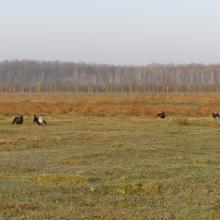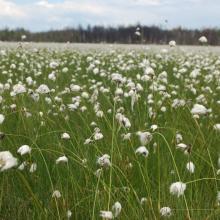





Polissia Mires
- Country:Ukraine
- Site number:1403
- Area:2,145 ha
- Designation date:17-11-2003
- Coordinates:51°32'N 28°00'E
Materials presented on this website, particularly maps and territorial information, are as-is and as-available based on available data and do not imply the expression of any opinion whatsoever on the part of the Secretariat of the Ramsar Convention concerning the legal status of any country, territory, city or area, or of its authorities, or concerning the delimitation of its frontiers or boundaries.
Overview
The Site lies in the midst of the Polissia forest complex, one of the largest waterlogged regions in Europe. It consists of marshes and oligotrophic and mesotrophic mires, as well as floodplains of the Zholobnytsia and Bolotnytsia rivers. The mires are surrounded by upland pine forests and plant communities which are characteristic of different stages of succession after fires and felling. Over 50 nationally and internationally protected plant species are found in the Site, including the orchids Dactylorhiza fuchsia and Dactylorhiza incarnata. The Polissia Mires support many nationally threatened species, including the dragonfly dark whiteface (Leucorrhinia albifrons), the smooth snake (Coronella austriaca), Montagu’s harrier (Circus pygargus) and the short-toed snake eagle (Circaetus gallicus). Several bird species and also otters and turtles breed in the Site. The arid climate of recent years is negatively affecting the vegetation of the upper marshes and increasing the threat of fire, especially in Miroshi, an area with significant peat deposits which are easily combustible.
Administrative region:
Zhytomyr Region, Ovrutskyi District
- National legal designation:
- Nature Reserve - Polissia Nature Reserve
- Regional (international) legal designations:
- Other international designation
- Last publication date:27-07-2021
Downloads
Ramsar Information Sheet (RIS)
Archived RIS
Additional reports and documents
- Taxonomic lists of plant and animal species occurring in the site
- Other published literature
